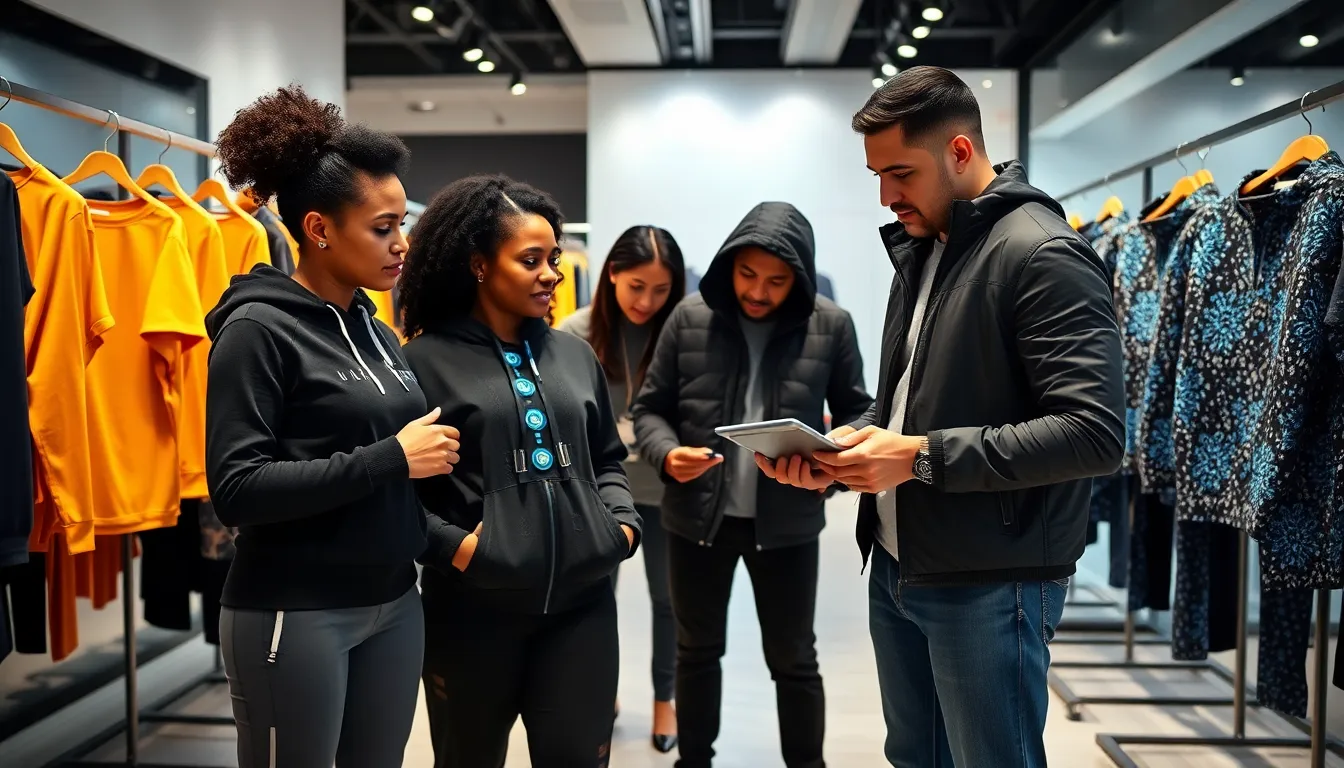In a world where fitness trackers can tell you how many calories you burned simply by navigating the snack aisle, wearables clothing has exploded onto the fashion scene like confetti at a tech convention. What was once a futuristic dream has become a reality, merging the realms of style and functionality into an empowering wardrobe choice. Whether you want to track your heart rate during a run or impress friends with a jacket that changes color, wearables clothing brands have something for everyone. Let’s take a jump into this fascinating trend that’s changing how we think about clothing.
Table of Contents
ToggleThe Rise of Wearables in Fashion

The world of fashion has long been about aesthetics, but with the introduction of wearables, it’s now about performance too. Understanding Wearable Technology has never been more essential. Wearables encompass everything from smartwatches to clothing embedded with sensors, bringing together style and functionality like never before. These technologies allow consumers to monitor everything from their steps to their sleep patterns, effectively merging personal health with daily wear.
Trends in Wearable Clothing
As tech companies and fashion designers collaborate, innovative trends are emerging. Look around, and you may find shirts that can self-cool, or jackets with built-in headphones. The integration of tech into clothing is not just a fad: it’s a revolution, bringing utility to everyday apparel. This trend is expected to grow rapidly, making wearables a staple in future wardrobes.
Key Features of Wearable Clothing
When diving into Functionality and Style Combined, wearables stand apart. Features such as moisture-wicking fabrics and adjustable fits are practical, but companies are also investing in designs that make people feel fashionable. After all, who wants to wear a dull gadget when they can rock something trendy?
Health Monitoring and Fitness Tracking
Wearables are not just about looking good: they’re about feeling good too. Health monitoring is one of the key selling points for this new genre of clothing. Imagine hitting the treadmill in your smart shirt that tracks your heart rate and calories burned. These garments make it simple to stay on top of fitness goals while still looking sharp. For many consumers, knowing their clothing actively contributes to their health provides an extra layer of motivation.
The Role of Sustainability in Wearable Brands
More than ever, sustainability is taking center stage in the clothing industry. Wearable brands are stepping up to the plate by ensuring Materials and Production Processes are eco-friendly. Consumers are becoming increasingly aware of the environmental impacts of fast fashion. This awareness is driving brands to consider recycled materials or sustainably sourced fabrics. The focus is shifting away from merely creating appealing tech to producing it responsibly. This combination of technology and sustainability could redefine what it means to be fashionable.
Consumer Preferences and Market Demand
Understanding Target Audience for Wearables is crucial. Generally, the target demographic skews younger, often comprising tech-savvy millennials and Gen Z who value fashion that also serves a purpose. They’re drawn to the idea of clothing that can adapt to their lifestyle rather than merely hang in a closet. The appeal lies not just in functionality but also in the ability to reflect personal identity through a fusion of technology and style. With increasing demand, brands must keep honing their products to meet varying tastes and preferences.
Challenges and Opportunities in the Wearable Market
The Staying Ahead of Competitors landscape for wearable brands is fiercely competitive. As tech giants like Apple and Google expand their reach into fashion, smaller brands face the challenge of innovation. To survive, they need to carve out their niche, often focusing on unique designs or specialized functions that enhance user experience.
Innovations to Watch
Also, certain innovations are set to redefine the space in the coming years. Imagine garments that can charge your phone or shoes that can dynamically adjust their fit. These innovations not only serve to excite consumers but also open up a wealth of opportunities for brands willing to invest in cutting-edge technology.


